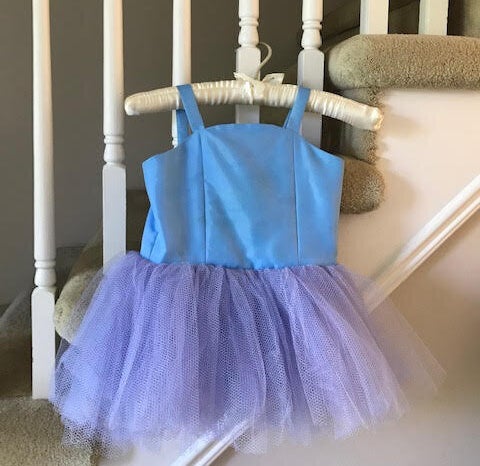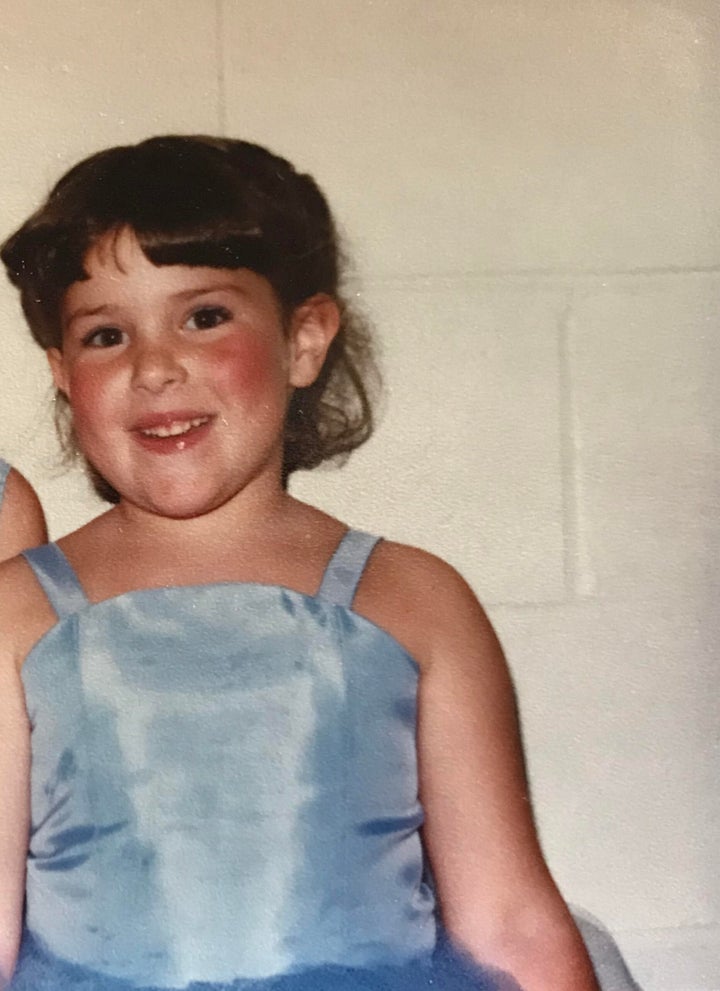
I remember not looking like the many blond, thin classmates in my ballet classes. Unlike them, I did not have a prominent clavicle, nor protruding shoulder blades, nor a thigh gap. Rather, I was “chiquita” with a “pancita” — terms of endearment learned from my relatives from Mexico, meaning “small” and with a “little belly.”
Even as a child, around six or seven years old, I knew I did not conform to the strict standards of physique and form required for ballet. We were repeatedly told to “elongate” our spines (this is as tall as I get, lady) and “tuck in” our tummies (uh, it is tucked). It made me aware that there were some of us who had long, lean, desirable limbs, and some of us who did not.
I feel self-conscious now thinking about my short, round body and my too-rosy cheeks standing out in a sea of pale, skinny blondes. Cute, chubby and coordinated, I imagine my younger self like the hippos in Disney’s Fantasia. My first tutu still hangs in the basement closet of the home I grew up in. It is light blue and essentially a square, nearly the same size vertically as it is horizontally. The body that once fit inside was a little ball of a person.

I grew up in New Brunswick in the 1980s, and as far as I could tell, ballet was the only style of dance available. There were no dance studios, no such thing as hip-hop or breakdance, and certainly no Bollywood or waacking. I don’t think our small town of Rothesay even had access to tap or jazz in my immediate area.
I took ballet lessons with the same teacher and classmates in a school gymnasium for a decade. I still cannot understand why I danced for so long. Ballet is beautiful to watch, certainly, but so straight and serious. Everyone is required to move in the exact same way, every pointed foot, every outstretched arm. I’m surprised to hear I liked it. I’m organized and reliable, but ballet requires precision and I’m not always interested in that. Perhaps even then I knew that life was too short to pass up an opportunity to dance.
“As women, we are continually conditioned to believe that the less space we take up, the more value we have.”
My mom never pressured me to dance. She tells me that I loved it of my own accord. I loved being with my friends, I loved learning new things, and I especially loved the excitement of the annual recital — the thrill of running around backstage in colourful crinoline and pink slippers, of having our hair and makeup done, of watching the older dancers, of curtsying for an audience of adoring parents at final curtain call.
Fantasia’s hippos are happy, twirling joyfully and unashamed in their tutus. Mom assures me that I was happy, too. That I demanded to attend ballet camp one summer, even though I was getting over chicken pox. That I insisted on auditioning for Canada’s National Ballet School with my classmates, though it was utterly absurd to think I could ever have been selected. A panel of examiners travelled to Saint John to judge our young bodies. I wonder what they thought of my squishy, coordinated self twirling around the room. Recently, while reminiscing, Mom laughs and reassures me she wouldn’t have let me go away as a teenager to train in Toronto anyway, as though there had been a chance I would have made the cut.
I quit ballet when I was 14.

I think I had simply had it. It’s now been over 30 years since my first “first position,” and while I still have questions about my short, rolly body, I’m beginning to find answers.
Objectively I knew – I know – I’m not a big person, but as women, we are continually conditioned to believe that the smaller we are, the less space we take up, the more value we have.
If your body works, shouldn’t that be enough?
A few years ago, I embraced the vibes and language of dancehall. I traded pliés and pirouettes for moves called “boom bam,” “Willie bounce,” “bogle” and “wahdat” — classical music for Vybz Kartel, Major Lazer, Sean Paul and Killa. Created in 1970s Kingston, Jamaica, dancehall music is sandwiched between reggae and hip-hop, its moves described as both empowering and exploitative of women.
I didn’t have a clue what it would be. I wanted to pursue a new activity and thought this might be fun, assumed the music would be good. When I’m in class at a studio overlooking Queen Street, I’m transported to a place of acceptance, encouragement and fun. I am forced to look outside myself to contribute to the collective and deep within myself to counter the running commentary in my head:
What was the point of all that time in a leotard if not to become a “real dancer” on pointe shoes? Would my toes have even been able to hold me up?
Would my life be better if I didn’t have fat squirting out of my sports bra? (Isn’t it gross that I even think it might be?)
Why can’t I understand how to do a body roll, teach my chest, hips, waist and limbs to move in a cool and synchronised wave?
It helps that the music is loud. It blocks out the boy who called me “short and plump” in Grade 7: certainly not the world’s worst insult, but not something any adolescent wants to hear and one for which he apologised a dozen years later. It blocks out my grandfather who once told me, in my 20s, that I’d look better if I lost my “baby fat.” It blocks out the ballet instructor who asked for stretched limbs, long neck and, of course, a tiny waist.
It helps that my incredible instructors remind us to find our own “sauce,” to choose our own groove, to relax. I finally feel like I have permission to appreciate the whole of my body, to stop comparing myself to others, to quit obsessing over accuracy and feel the steps, to be “wide and free.” I’m allowed to wind my hips to the left or to the right, I can even switch halfway through the eight counts – whatever feels good, so long as I’m choosing.
It helps to be among men and women of varying ages, shapes, sizes and cultures in various states of dress and undress: leggings or jean shorts, fishnet tights, neon crop-tops or long-sleeve plaid shirts tied around the waist to accentuate the movements of the hips, Nike Free sneakers or bare feet. Nothing is uniform. It’s not meant to be. The vibe is up to you.
Each week, I strive to carry the feeling of lightness and power out of the studio and into my life. To actively remember it’s pointless to wish our bodies were anything other than what they are. We must each find ourselves, find joy, in the music and in this world.
Each week, we learn new choreography, clap and cheer after we’ve completed our routine and recorded it on our phone. Ballerinas wait outside, watching soberly through the window in peach, black, bland leotards, until they can enter the same room we’re exiting, sweaty, frizzy, laughing.
This article first appeared on HuffPost Canada Personal
Have a compelling personal story you want to tell? Find out what we’re looking for here, and pitch us on ukpersonal@huffpost.com